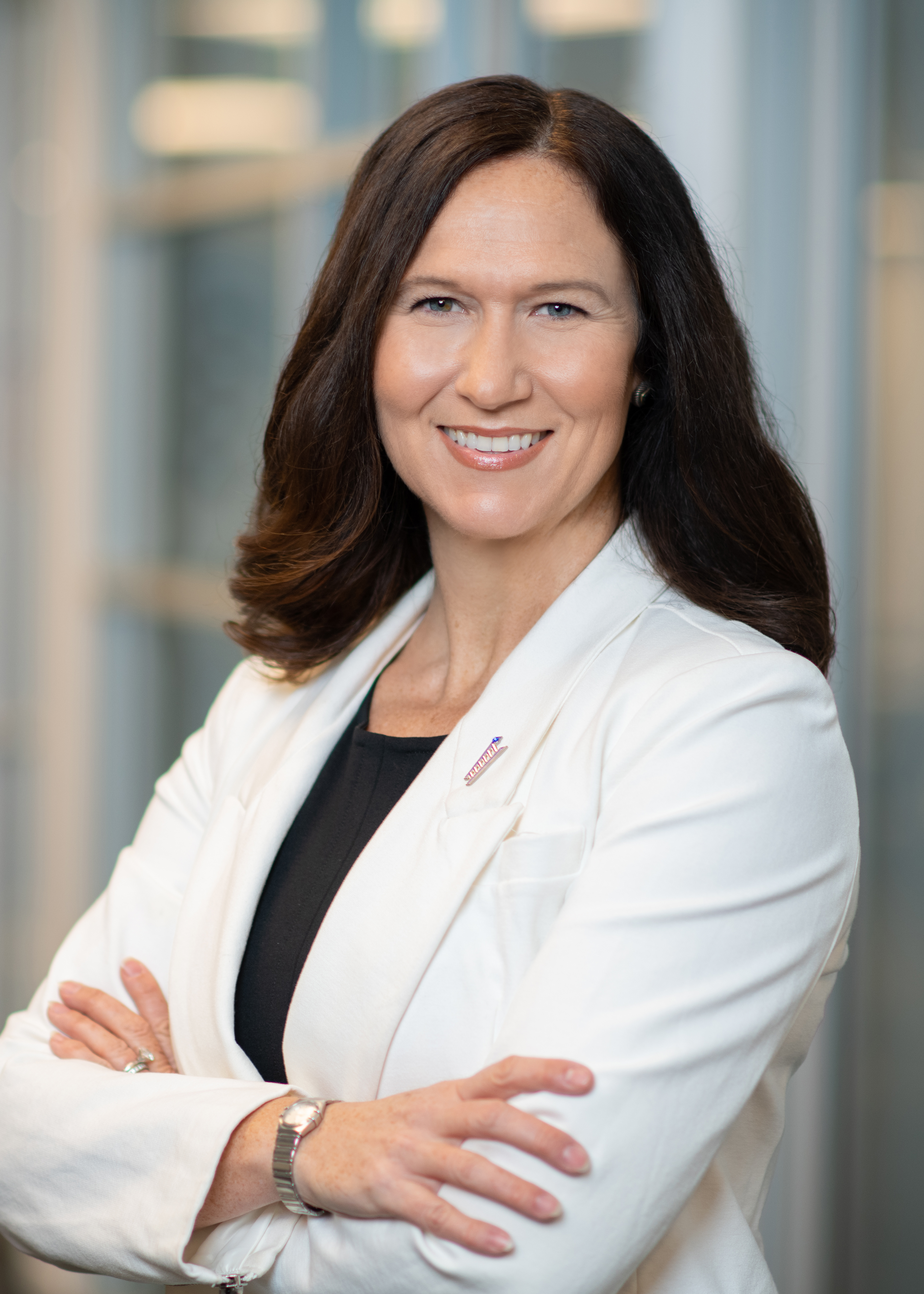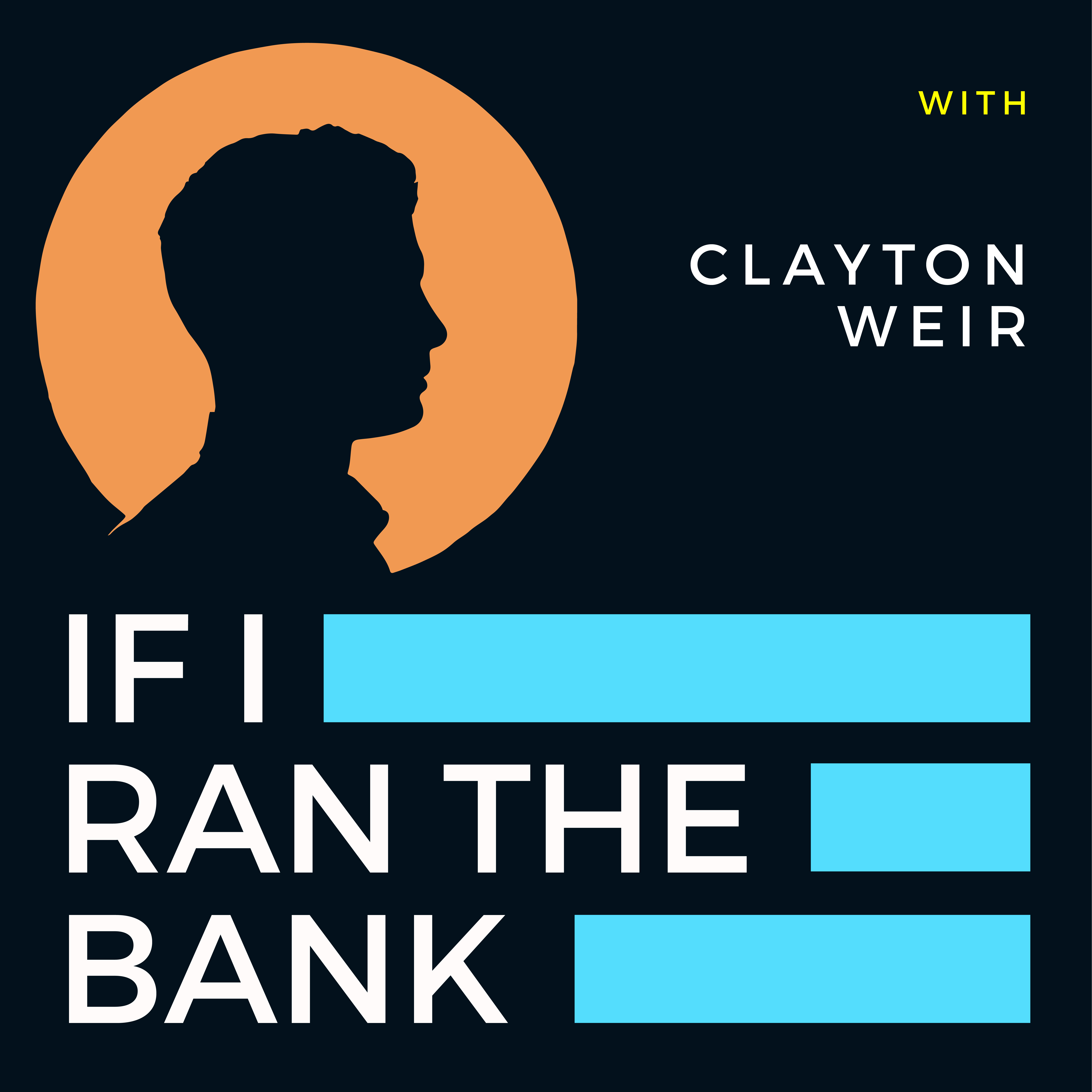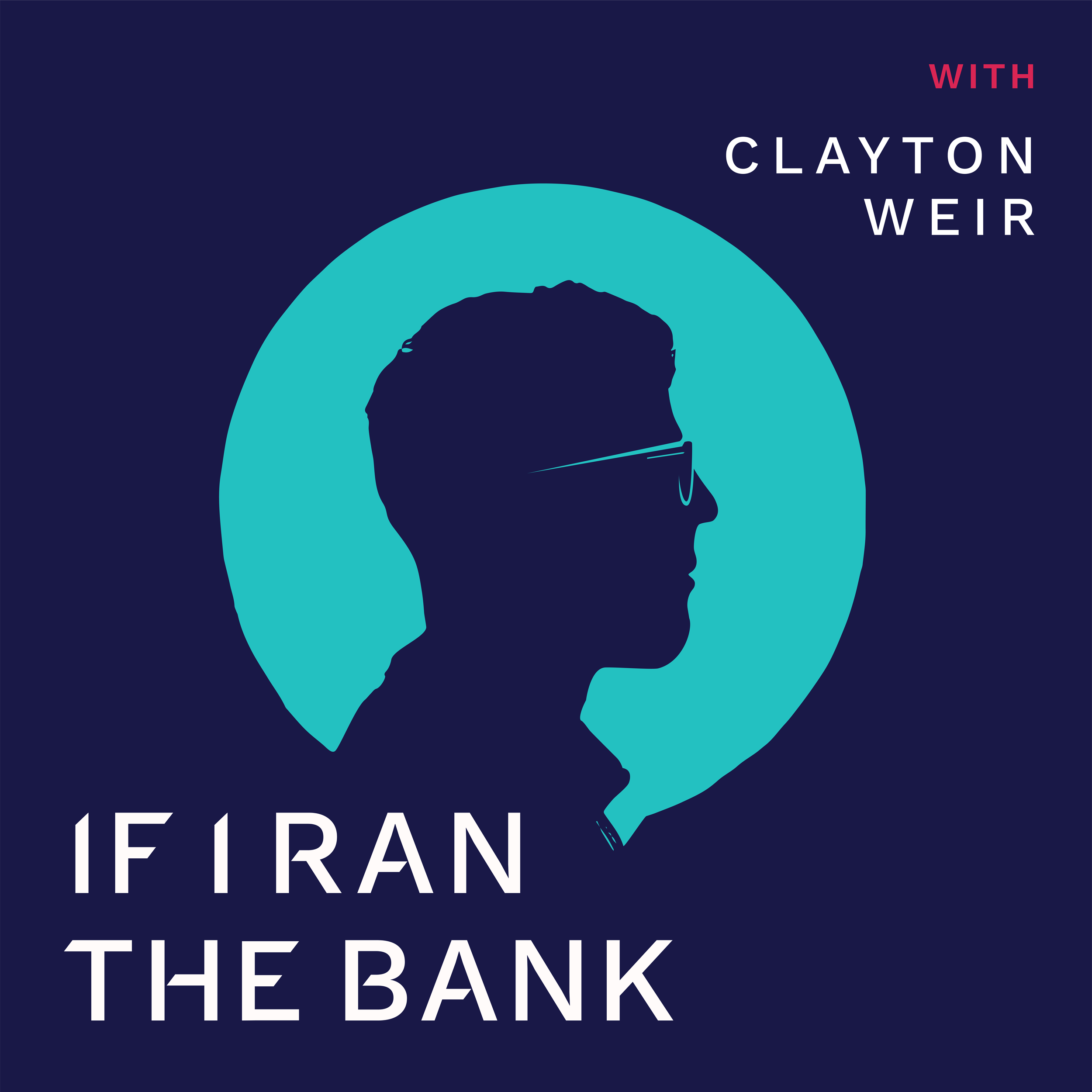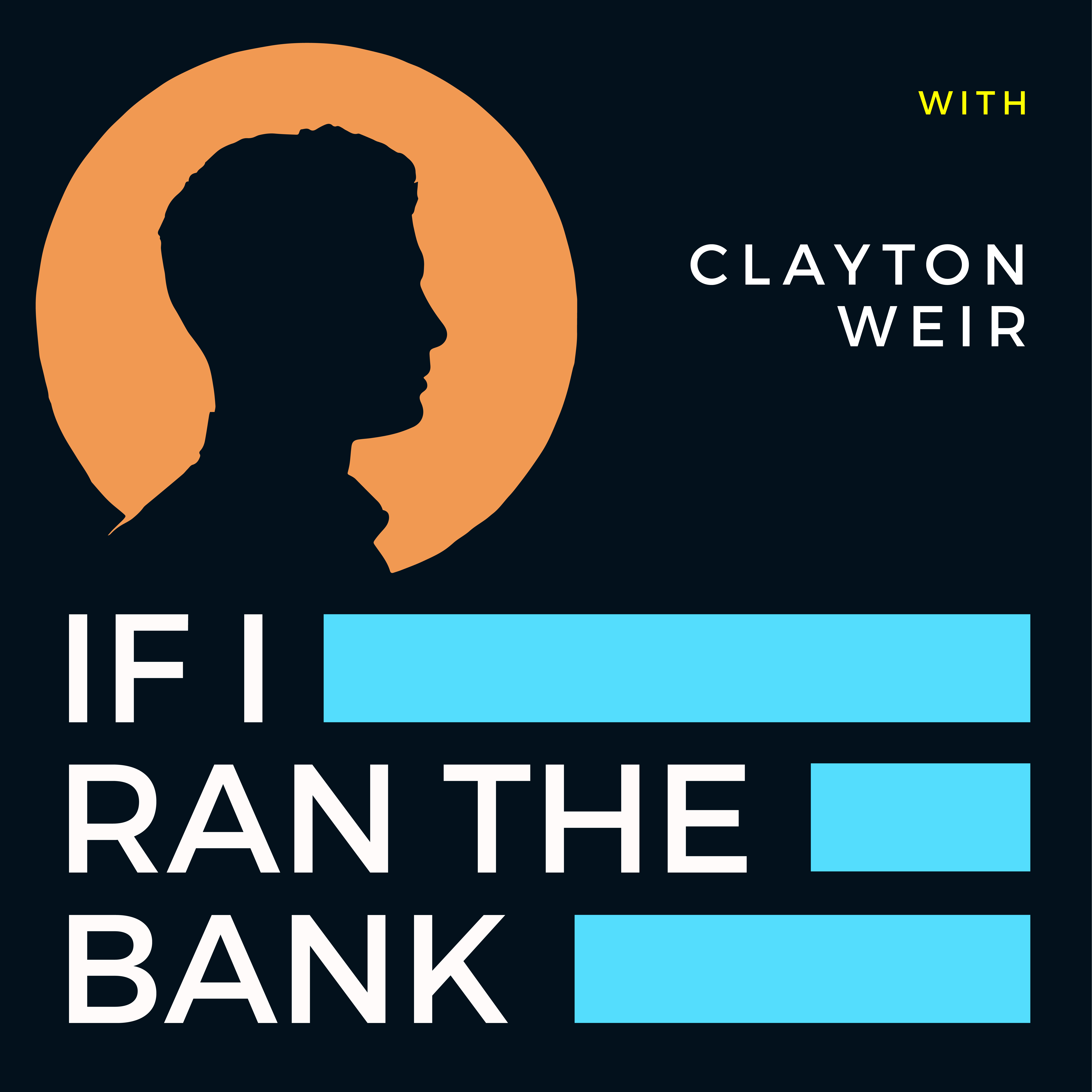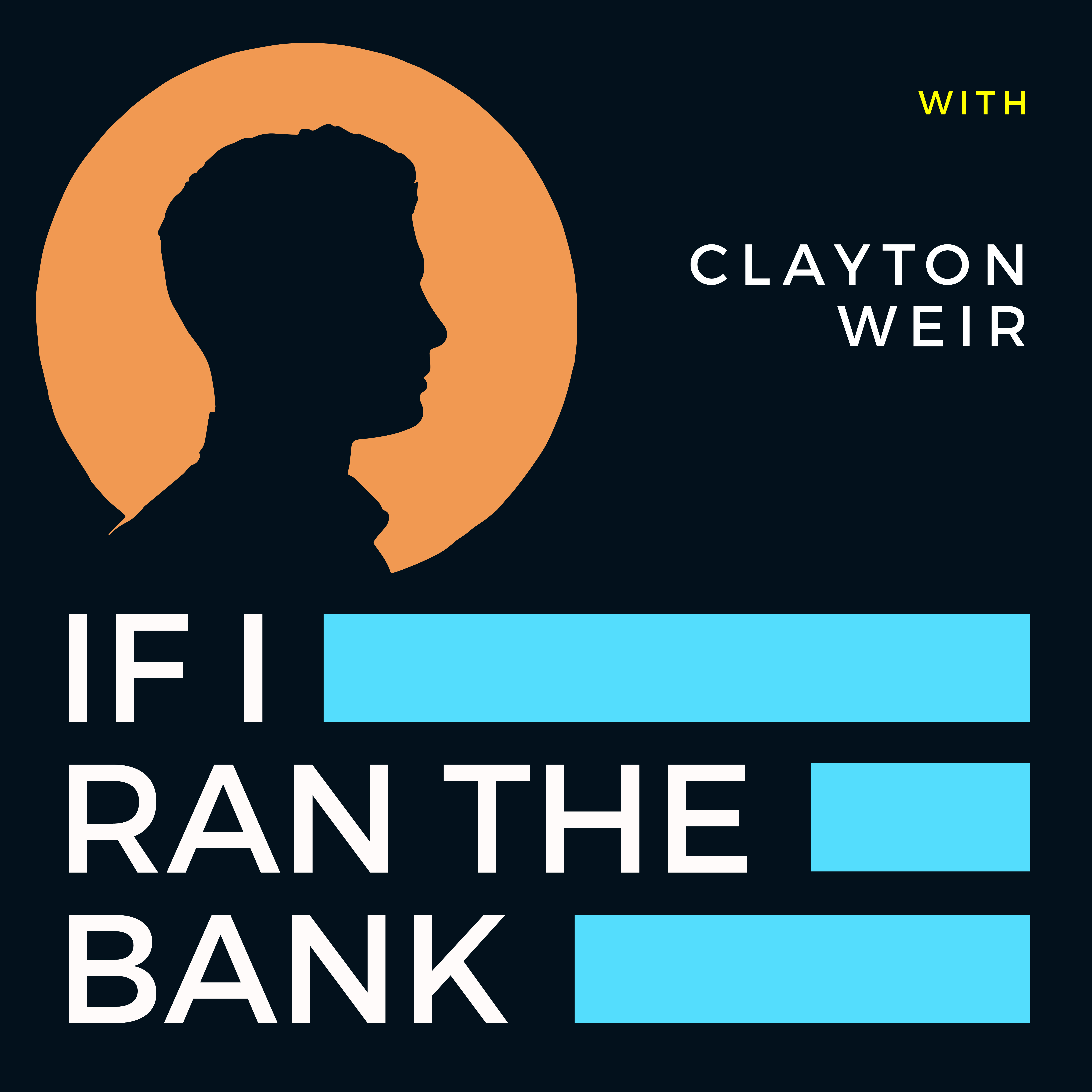Verna Grayce Chao Would Run the Bank like a Technology Company
- 0.5
- 1
- 1.25
- 1.5
- 1.75
- 2
Voiceover: If I Ran The Bank is a podcast hosted by Clayton Weir, Co- Founder and Head of Product & Strategy at FISPAN, a Fintech that is enabling banks to provide contextualized consumer life experiences to their business clients. Clayton's a thought leader in financial innovation and hits on the hottest topics in banking, finance, and the future of payments. And he wants to know if you ran the bank, what's the one thing you'd go all in on. Please tune into Spotify, Apple podcasts, Google Play, or wherever you get your podcasts. And now here's your host, Clayton Weir.
Clayton Weir: Hey everyone. Welcome to another episode of If I Ran The Bank. As always, I'm your host, Clayton Weir. And today my guest is Verna Grayce Chao, the Executive Vice President of Treasury Management at City National Bank, affectionately known internally as VG. I don't know if it's affectionately or if that's in reverence as VG, but we can leave that for another day. And unlike a lot of guests we have, Verna Grayce actually does run a really material part of a bank. But more importantly than that, I think it's a very different kind of a bank. And so it's a group I've gotten to know a little bit over the past few years, who do things very differently in a couple of ways, both when it comes to their technology strategy and the depth or the materiality behind their vertical focus on some of their key verticals. So, those are a couple things that I really wanted to have VG on to talk about today. And I know I just called you out as running the bank, but you don't necessarily identify as a banker, right? You are a career technologist who's experiencing banking at the moment.
Verna Grayce Chao: Yeah, absolutely, Clayton, thanks for having me. I'm really excited to be here with you and with the audience, but yeah, maybe that's why I fit in the topic is if I ran the bank because my background is in technology and what I always like to say is really integrated solutions. So we don't just think about the product, but really the servicing around it, as well as ultimately the client experience and what are they trying to accomplish. So reaching in into that client's workflow. That's the background that I bring. I'm not a stage treasury professional, but I do have great team with thousands of years of experience in treasury.
Clayton Weir: It's hard to beat thousands years of experience. So, CNB has a pretty distinct regional footprint, not everybody will necessarily be familiar with the bank. Do want me to just set a little bit of context about who you are and what you all focus on?
Verna Grayce Chao: Sure. So, City National Bank is based in Los Angeles. We really grew up serving the entertainment industry, as well as deep in commercial real estate and development. We really do focus in the major metropolitan areas as well as the key entertainment areas. So we're all up and down California, in New York. We're also in Nashville and Atlanta, so music and film and television production. And then we are growing in areas like Miami and Washington DC as well. So, that's our footprint. And, we've really focused around key vertical industries, as well as on the personal side, servicing high net worth, ultra high net worth clients.
Clayton Weir: No, it totally makes sense. So a parallel that people might be familiar with something like First Republic might do around, Venture Capital, high net worth tech ecosystem. It's the personal side, the operational side of those businesses, built around that platform.
Verna Grayce Chao: Yeah, exactly. Yeah.
Clayton Weir: Awesome. And, just jumping into it. When I asked you, what would you do if you ran the bank offline? You said," Well, I'd run it a lot more like a technology company." And I think I said something like," Well, I think that that's maybe the most misinterpreted piece of advice that banks have ever heard." And I'd love for you to explain what that means to you.
Verna Grayce Chao: Sure, absolutely. So, when I say run it like a technology company, it goes back to my original statement, which is really thinking about the ultimate outcomes and the end- to- end process that our clients are trying to achieve. Thinking about aligning long- term, all of our talent around those outcomes as well. A lot of banks you have do shared services when they're trying to deliver their capabilities. And what we've done is really aligned around by what I would say, a product set, and that really is the end to end working capital, treasury management capabilities. What we've also done is thought about it from an ecosystem perspective and within that ecosystem, what are the parts that we really need to own and drive both for differentiation and innovation, but also which are the parts of the ecosystem that we want to partner with. And, what does that mean when we are really delivering a capability to our clients? How is that done in a servicing model and how has that ultimately done to achieve the outcomes? So that's it at a high level, the framework for how we think about it and how we're structured maybe slightly differently. And then very much, I know it's trendy to say, but really adopting the technology methodologies around truly being agile being willing to adjust our backlogs based on our client's feedback, being laser- focused on innovating beside our clients and ensuring that we're responsive to that as well. All doing that within the framework of a regulated entity, but there are ways to do that. And that's the approach that we've taken.
Clayton Weir: You said something earlier about the overall problem being around solving end to end working capital for a business. And, that's universally true. It's fair to say that a vertical strategy in banking historically, maybe was a euphemism for something like having relationship managers that have insight and experience into what your working capital cycle is like. And what's weird about or unique or idiosyncratic to your industry and the supply chain and all that, and then allowing you to solve it with some of the same horizontal products that everybody else gets. I think what you're trying to do is something beyond that, or more evolved over that model, is that fair to say?
Verna Grayce Chao: Yeah, absolutely. You start with the professionals that manage working capital. All of the finance professionals, but you start getting into some of these deep vertical industries like the talent management and in entertainment, which has its own very, very unique requirements. Or you look at areas like title and escrow that have unique volumes and processes and flows, and that's where you can truly get vertical because there are pain points within their working capital cycle that are not what I would call a SMB. Just a small business need. They have these real deep in- efficiencies that you can actually laser focus and target and they can truly transform the operational leverage that your clients get or the liquidity leverage, or all of the different components of working capital. And that's what we've done on entertainment for the last 35, 40 years, but really for the last 10 to 15 years being technology led to target those. What we originally did was target it with servicing, with people, with bodies, but the last 10 to 12 years, we've really tried to take an approach where, how do we solve that with technical?
Clayton Weir: It totally makes sense. And you said something else interesting there about size of the business, not necessarily being predictive of their complexity or the pain points. And I think that's really interesting because business banking, if we think of the broadest of all of the businesses the bank serves, there's these 18 different segments of small is different than SME is different than business bankers is different than commercial is different than treasury. And some arbitrary often revenue amounts. Vertical is probably, as we talked about a different, a better measure of the cadence and complexity of working capital, but there's probably other dimensions of complexity that are not linearly aligned to size.
Verna Grayce Chao: Absolutely. It's funny. We're working on a project with some folks that had come to the bank in the last few years and weren't as deeply involved in some of our verticals. And we were having a debate about the solution and they were really bringing this revenue and employee size to what we were doing. And when we truly looked at the data, we showed that some of our smallest clients had the largest complexities, but also some of the largest value for the bank. And so we literally had to get into the data and look in aggregate at their activities. And sometimes it's like in entertainment where you have centers, you have accountants and business managers that are really aggregating and there's complexity in that volume, but down at the account or the client level, they're very small clients. And so that's where you get the two dimensions intercepting is an example in one of our verticals. And if you solve for the aggregation only, you miss the fact that behind that aggregation are individuals or smaller entities that are down the funnel. And so you can't think of it just as solving one piece because it's very dependent on the other piece. And that's where, to your point, you get to that vertical piece. That's what it means to be verticalized.
Clayton Weir: No, it totally makes sense. So, you said over the last 12 years, obviously, you've started to solve these problems more and more through actual dedicated technology solutions. The word weird came to mind. That sounds like a pejorative word, but very idiosyncratic aspect of CMB is that you guys have, in addition to whatever proprietary technology channels that you would normally have as a treasury manager organization, you have at least three that I'm aware distinct operating businesses that are software companies or Fintechs, all their own that are aligned around this vertical. Can you maybe give us a CliffNotes about those three businesses and what they do and what they do for clients and how they fit into the broader bank?
Verna Grayce Chao: Sure. Yeah. We call them our entertainment payment ecosystem. So, that's their strategic purpose. And we started 10 to 12 years ago with our first acquisition, which was Datafaction, a specialized accounting software. And so when you start thinking about the treasury professionals or the accountants that are managing the day-to-day finances, they have a bank account, but they also have the ledger. And we start to realize that you have to think about them as an integrated approach. And we did this. This was before my time, other people driving the strategy, and we integrated those very, very early on. And that was really to target the end talent of our entertainment segment. What we realized though, was that the payments coming through the bank were coming through another piece of the industry, which was the SAG-AFTRA and all of the Guilds, that's where that comes from. And all of a sudden the problem there was we were seeing 20 cent checks and 20 of them being sent. So there was this huge need to focus on that piece. And how could we drive efficiencies because ultimately the deposits were coming into the bank and then being fed into our accounting platform. So you can see the second pillar. So we'd invested early in a company called Exactuals that really drives efficiencies around that. But then you go further upstream in entertainment industry, it really all starts with the contracts for film and for TV and for music, some of the rights. And so what we've also built out and acquired through our film track is a ledger that goes upstream to all of the participations because that's what flows from there are truly all the payments. And now we've integrated them through our API Platform, EASI Link, which enables the payment flows, but more importantly, the data flows. The payments were flowing no matter what, but what was really valuable was how does that data get passed across all of those? And so that's the ecosystem that we built, but always focusing on the flows because we see that. But also the user for FilmTrack is different than the user of AgiLink and Datafaction, and so you have to really design and build for those users, which is why it's really valuable to have those distinct entities and measured against the satisfaction of those clients sets. But in aggregate, the value is really providing to the industry. And then ultimately it truly, actually is operationally efficient for the bank to solve some of these manual, paper- based, highly intensive, duplicative, double entry type of processes. So there's a benefit to the bank in the longterm to by this being an industry that we're committed to. So I don't know that wasn't a CliffNotes, but hopefully it gave you a sense of how we think about it, both from the client and the end point and being participants in an industry in a vertical, but also the benefit to the bank - why the bank does this.
Clayton Weir: Yeah, It's interesting in a lot of ways, but I think it's so interesting because on the surface, I never really thought about how that industry worked. And you might argue amongst the dimensions you're talking about, maybe it's as complex of an industry as the risks. In terms of the value chain and the way that money flows throughout it. And it's multi- dimensional because there's all these multi direction licensing kind of things and all these agency elements of value chain. And then there's this massive gig economy type aspect to it where there's this extremely long tail of really small parts of the value chain. That all need to get paid. So the cost of administration, the cost of managing those information flows must be just absolutely immense.
Verna Grayce Chao: Yeah. And that's the efficiency that we've been trying to solve as a member of that community. City National Bank sees itself as part of the entertainment community and focusing on servicing those needs. But those are major inefficiencies and even just basic duplication. You start thinking about data and information has to be in so many different places. There's a way for us to provide those channels where it flows, that's just in and of itself a huge value.
Clayton Weir: Totally. And you had mentioned offline to me that those tools were purpose built to this idea of the value chain in entertainment and different problems on the way. But I think over time, you've come to realize that because they're really just solving these core problems, patterns of business operation that you're starting to find these other vertical diecious where effectively the same tool set is deeply relevant because the problem set rhymes. So the jobs to be done rhyme with what the entertainment industry and what you've been working on solving for.
Verna Grayce Chao: Yeah. That's the interesting part is the adjacent markets for each of these companies that we own. So data faction fits very nicely into the family office space because a lot of these business management firms are multifamily offices if you took a couple steps back, but it's not a perfect fit. So what we've done is said," Hey, what are the requirements for family office? How is that different?" And we've identified those and we've added a new module that might not be relevant to the entertainment business management firm, but a hundred percent of the platform plus this additional piece gets us into that market in a very differentiated way. And then again, we wrap our service model around it. And when you have differentiated technology, a servicing model and a knowledge base that can really serve that client, you really have a defensible market position. Exactual, similarly, they aggregate payments. The insurance broker market has some similarities, again, looking at adding one or two things to that, to be able to go into that market. And then FilmTrack, at the end of the day, is really managing intellectual property rights. And there's several adjacent industries where intellectual property rights management needs to be digitized has a lot of the similar challenges. And so you start to see how solving something one place, it's not usually a lift and just throw it in. It's not that easy, but we do have a center of gravity of a capability adding those requirements. And then, always wrapping that servicing model around it, which is truly what we're known for. And a lot of times those three pieces give you a beachhead into some new verticals.
Clayton Weir: So you hinted at some of the operational aspects of this earlier, about trying to have the agility to do this, but do you want to maybe unpack that further? Are there things that you think are unique about the way you're structured or the way you operate that allow you to have these software properties that are relatively agile and relatively responsive to the market's needs and how they change over time?
Verna Grayce Chao: I'd say the main thing that empowers and enables us is that our DNA, our values are really, we like to say we're client obsessed. And so from our CEO down, solving our client's problems is a virtue in our bank, and that's where it all flows from. So, that's where it starts. But I would say operationally, really focusing on the vertical and being agile and being willing to have 18 month roadmaps. But when we understand something's a priority for a client, being willing to groom that in sooner and not waiting. I think that that's really important when you are so verticalized, clients, you say, "well, that's on our roadmap two, three years out." They're your biggest clients, or maybe you're not even your biggest, but some of your most innovative clients. They are the sentinels. You have to be able to adapt to that. And you can't do that. If you have to spin up a project every time and you have to go through a full business case every single time. When we think about the value we add to the business, we really can focus on our OKRs. We can focus on things that are more macro and that's, again, I've only know this bank, but my understanding is that the traditional approach in the industry is business case, get a team. And that team might've just come off doing loan work, or just come off doing an internal collaboration portal. So they don't really live and breathe the pain or the challenge or the amazing uniqueness of what that client does. And that's what we do have. These dedicated teams are steeped in the end client. They don't have to be told what the client is trying to accomplish. They're aligned to it. So, I know I bounced around there, but those are the approach that we're taking. Again, I don't know exactly how unique that is because this is the only bank that I've been a part of.
Clayton Weir: From my perspective, I think it's somewhat unique. And obviously it's a tough call. There's always a pendulum between centralizing some of those support functions bank- wide, and it's a synergy case that way. And then decentralizing it back to have continued bank context. Obviously, I can't imagine doing what you are all trying to do every day without the model that you have behind it that way. Talking about what's unique or not unique. It does strike me as the banks approach is quite unique. And you would think that all of your classical economics and Harvard business review literature would predict that if you were a relatively small financial institution in the big scheme of things, relative to what your now parent is, or what the money center banks in the U. S. are, that this is what you would do. You would hammer a niche of video, in this case it's a unique geographic and verticalized moat that you all have. And it doesn't seem to be a common model. There just aren't a lot of banks like this that are so focused. You have a thought as to why that's hard to do or unappealing to do for other institutions?
Verna Grayce Chao: It's a really, really good question. I'll just pontificate a little bit. It's just my opinion. Now I get them to being repetitive. I do think it comes down to your mission and your values. And if you say that you're client focused and client obsessed, but then you're trying to be the everything to everyone, those come into conflict and contention. And so by being able to focus, even within some of our businesses that are not maybe industry focused, we do have a very specific segment focus. So our personal banking is not a retail banking. We focus on a certain set and really try to solve their problems. I think that it's a strategy, but sometimes, we always know culture eats strategy for breakfast, as they say, and that's probably at play on why this is not maybe a model that is more proliferated across the U. S. banking space, but it really does start with, if you're going to be true to your values of client obsessed, then you have to do it, because you can't say it and then when the client says, "this is my pain point." You're like, "Okay, well, we'll get to that in two years." Good luck with that kind of thing. You really have to be responsive. And then it is a virtuous circle where once you build that trust and you deliver that thing that solves their pain, they're actually more open with you. They're more open with you on their next pain point that they want you to solve sometimes. Some of them were like, "hey, we're a bank. We can't solve everything." But then also they trust you with more of their business. That's the other side of the virtuous circle. And you mentioned the Harvard business case. That's the value to the bank is that by solving their problems, you build that trust. They build more business with you. And, it's not just an innovation path, it's a retention and a client and a client share path. But I think that you've got to talk the talk and walk the walk. It really does come down to values and your strategy.
Clayton Weir: Totally makes sense. And as a counterpoint, it sounds like if we were around the board room at CMB and some opportunity came up, if it didn't have the margin or the revenue profile that would allow you to prosecute the opportunity with your high touch, high service model, it would just be a non- starter. You would never try and it would leave that business opportunity to decide, which sometimes with mission and vision and those kinds of things, it's more about what it's stopping you from doing then what it allows you to do as well.
Verna Grayce Chao: Yeah. It literally came up about a month ago. An opportunity came across my desk and it hit a ton of things. It looked like our play, but then it came down to a few things that were not there. And the separation from the client, we were looking, it was an ecosystem play where like," No, our servicing model, that relationship, that's not something we want to give up on." There was a lot of things that were really exciting about doing it, but ultimately we did not move forward with it because it didn't fit those things. But we could have been diluted into thinking because it hit, say three of five, but the other two were actually weighted much more heavy. And it's what we know how to do. I think that's the other thing. And we're not perfect, but there the discipline around some of that is really important.
Clayton Weir: No, it is. At the start when you talked about your vision for acting more like a technology company and aligning things behind these client needs that you identified to fulfill them. I obviously honed in on the software properties that you own and operate. I think it's so fascinating, but you also mentioned that there's a lot of decisions about build versus buy and and partners and it just triggered my memory when you said ecosystem again. Do you want to talk about that? So, some of the other things you're doing, obviously not everybody in the industry is using your tools. There's other tools, there's other ecosystems and other partners. Can you just walk through some of the stuff you do on that side of the coin that's not owned and operated by you?
Verna Grayce Chao: Well, part of why I was so thrilled to take this job was that I feel like the innovation in banking that's happening now and is only accelerating in payments is so exciting. I just think that that, and obviously for you and your organization, that's important, but that's an area where I think it's really important to make... Well, I'll talk about the size of my mouth here... To make really good long- term decisions on what you're going to invest and own and what do you as a bank or a Fintech, for your audience, need to plant your flag on. And, that's where the build by partner decision is really important, but then things are also moving so quickly that you've got to place some bets and do some testing. And that's where partnerships are just a great opportunity to try to do that at a lower risk in a lower cost. And, the ecosystem is tried and true and proven in lots of other industries, but I think in payments more broadly, it's a great opportunity to really bring that kind of thinking, as long as you have a strategy of which parts we need to own and which we need to drive, but then there's just so much innovation out there that having the ability to partner or buy. We're not afraid to buy, but we're very selective about what we do want to buy. So I don't know if I answered your question. I feel like I bounced around on that one.
Clayton Weir: It makes sense. I was just curious of your thoughts on how you make those decisions. I'm just about at the end of my questions that I had for you. Is there any" Oh, by the ways" now that we're having this conversation, is there a question you wished I would've asked you or is there another thought that you have on all of this to put it in?
Verna Grayce Chao: The only thing I would add is, and it connects to, again, your business and the comments I just made. I do think in the title of your podcast, If I Ran The Bank, I just think it's going to be exciting to see how all of this evolves. And, there's a lot out there on the commoditization of components, but when you're aligned to your client's needs and you stay focused on that, and you build your ecosystem of partners who have a shared vision around that, I do think that that's going to be a very effective model of probably the many models that are going to evolve over the next five to 10 years. But if you're not thinking that way, you are going to have to pick a different model, because I do think the role of the players in the ecosystem, the Fintechs, the banks, all of the innovation that's coming with the data and the payment rails, you got to have a frame to operate within. So that's my parting shot, but I think that's what's exciting to me about where we're going and what we can do over the next five to 10 years and into perpetuity. But I do think the next five to 10 years are going to see some of those models really solidify and I feel good about where we're coming from, but that can also be agile within those changes that come at us.
Clayton Weir: Yeah. I meant to mention it earlier, but when you hit me with the word commodification there. I thought you probably had a bit of an interesting seat at the table on this earlier in your career because I think you were at both IBM and Dell. I can't think of two more businesses that their main lines literally went to zero and they now exist as completely different businesses solving completely different problems for the same customer and different parts. I think they both adapted well to that change.
Verna Grayce Chao: Absolutely. One of my favorite things to say is I'd rather be the cannibal than the meal. And I think that does come from those days in those organizations where the pace of change was so swift. And that's why I think I'm comfortable in the role and the pace of change that's happening in treasury and working capital overall. But, the way that those companies did that was by leveraging their talent, their insight, their partnerships, but also listening to their clients. Being right there and almost anticipating or being there right at the moment of inflection. And, that's something that we have to do as well.
Clayton Weir: Totally makes sense. And that's probably a great place to leave it. If I had to sum it up, what I heard today, the opportunity as the bank is to go the extra mile on what big client focus really means. And in a business sense, it's understanding true operational realities and pain points for those businesses and being a material part of the solution, not a point part of the solution in executing the payment. And I think the better you get at that, the more outsized your returns to that relationship and probably financially are going to be for a financial institution. The more defended from this commoditization of certain aspects of banking are going to be. So, that's a great lens to put on the world. And I really appreciate you taking the time today to share that with us all.
Verna Grayce Chao: Thanks, Clayton. My pleasure. It's really been fun.
Clayton Weir: Yeah, same here. Thanks, Verna Grayce. And thanks, everyone for listening. As always, please feel free to subscribe. Follow us wherever you get your podcasts and never hesitate to send us any questions, comments, or thoughts to info @ fispan. com. See you next time.
DESCRIPTION
Verna Grayce Chao is Executive Vice President in charge of City National Bank’s Treasury Management Solutions and serves on the bank’s Executive Committee. On this episode of If I Ran the Bank, Clayton and Verna Grayce discuss CNB’s entertainment payment ecosystem, being client obsessed, and how she would run the bank like a technology company.
Today's Host

Clayton Weir
Today's Guests
